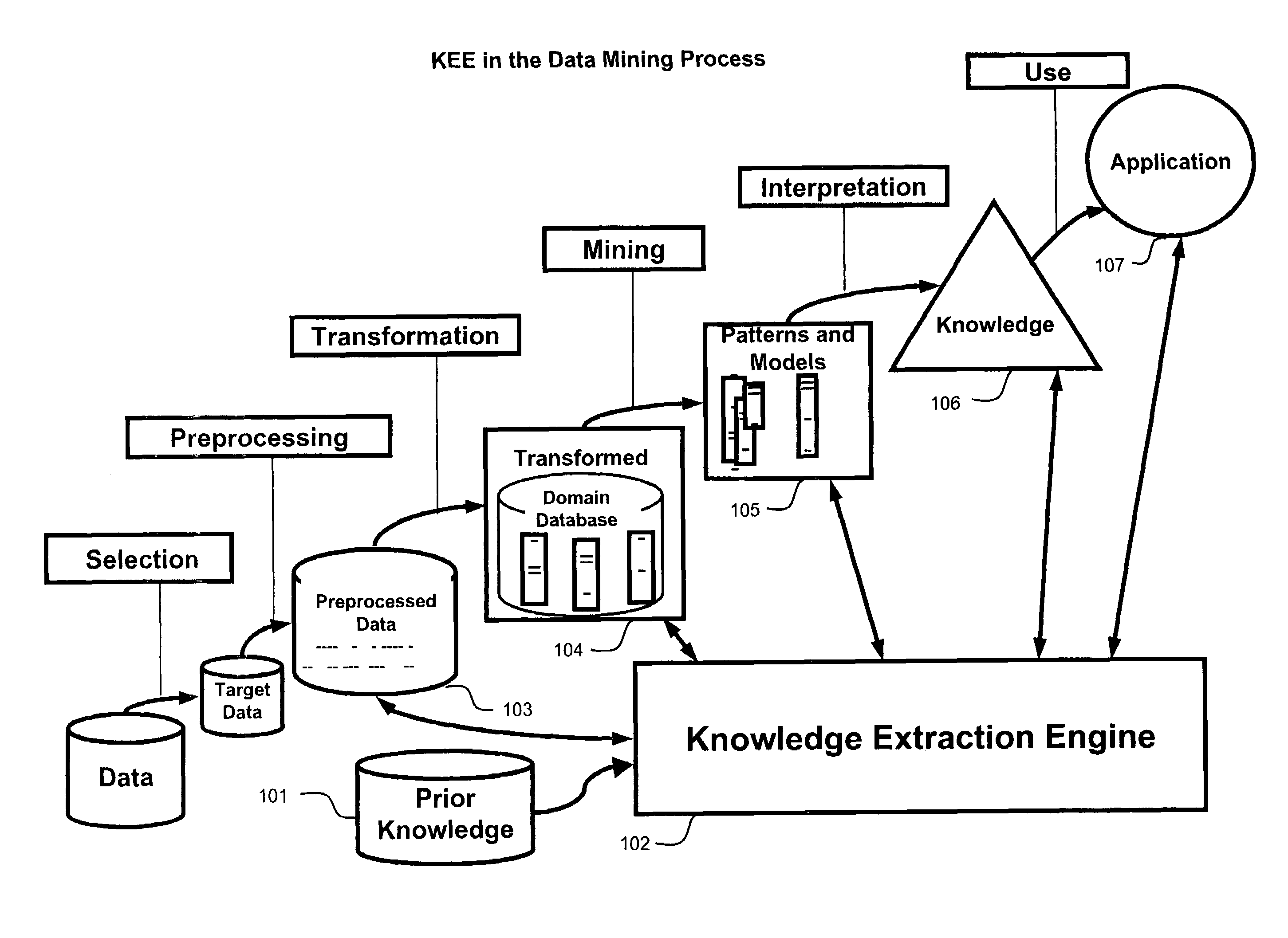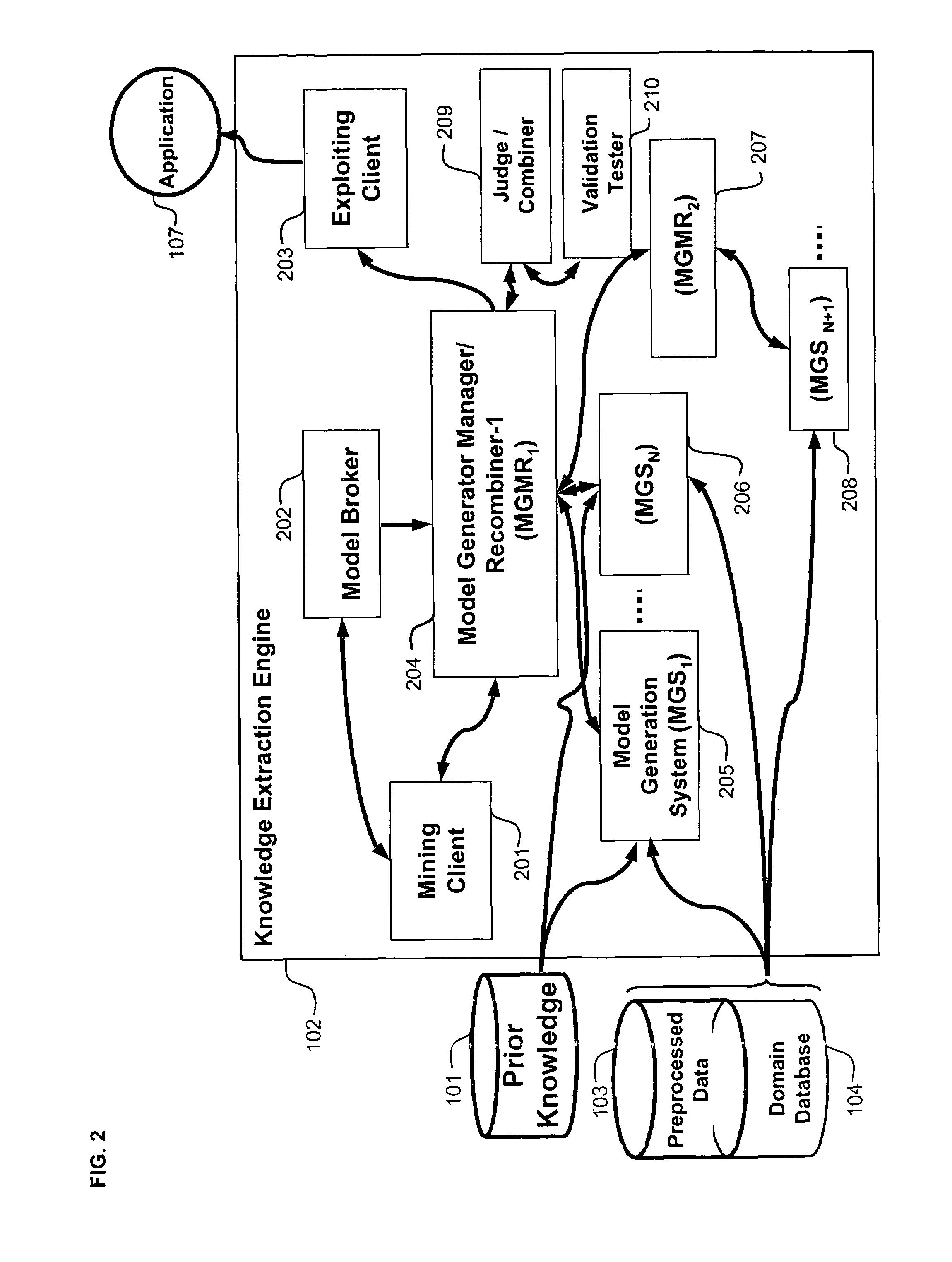Automated method and system for generating models from data
a technology of automatic supervised learning and data, applied in the field of knowledge extraction engine, can solve the problems of not being able to satisfy users' goals, bloom fails to show how more than one processor can be exploited to provide better over-all performance, and the ability of kee to find the best model and the best combination of models, etc., to achieve the effect of improving the performance of an automatic supervised learning system and being easily integrated into other computer systems
- Summary
- Abstract
- Description
- Claims
- Application Information
AI Technical Summary
Benefits of technology
Problems solved by technology
Method used
Image
Examples
example domain
and Task
[0077]For the rest of the discussion, we will consider an example domain of event descriptions drawn from an online newspaper, and the task of estimating the number of people attending each event. An example of the event description text is given below:[0078]Sunday, Sep. 21, 2002, 10:30 a.m. registration, 11:30 a.m. walk[0079]Walk for the Animals[0080]Benefits Delaware Humane Association Banning Park, Wilmington[0081]Admission: $20, ages 6-16 $5, 5 and younger free[0082]For information: 571-8172, Ext. 301, or dehumane. org
[0083]On the surface, this is a straightforward numeric prediction task, but there are many applicable techniques. Since no population estimate is included in any of the data items, the user (via the client process) will need to provide those estimates for at least some description instances. Alternatively, the user may prefer categories of event attendance population {1-49}, {50-199}, {200-799}, etc. rather than a single-valued prediction.
[0084]Since many ...
PUM
 Login to View More
Login to View More Abstract
Description
Claims
Application Information
 Login to View More
Login to View More - R&D
- Intellectual Property
- Life Sciences
- Materials
- Tech Scout
- Unparalleled Data Quality
- Higher Quality Content
- 60% Fewer Hallucinations
Browse by: Latest US Patents, China's latest patents, Technical Efficacy Thesaurus, Application Domain, Technology Topic, Popular Technical Reports.
© 2025 PatSnap. All rights reserved.Legal|Privacy policy|Modern Slavery Act Transparency Statement|Sitemap|About US| Contact US: help@patsnap.com



